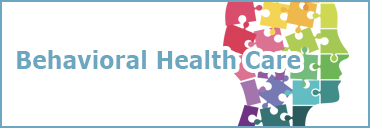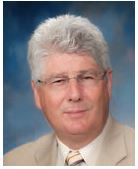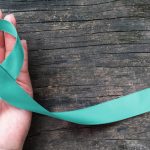Share

In February of 2017, Counselor published my article about integrating substance use services in psychiatric and medical systems. This article will discuss my experiences addressing the opioid epidemic and other substance use disorders (SUDs) during the past several years within an integrated delivery and payor system at the University of Pittsburgh Medical Center (UPMC) and its insurance division’s behavioral health integration (BHI) department within the health plan. Although many initiatives have addressed SUDs, I will limit the focus of this article to education and training initiatives, clinical services, internal and external collaborations, advocacy for families and children, and dissemination of information and resources.
Staff Education and Training
Our BHI department provided or partnered with other insurance division departments, UPMC hospitals and clinics, and community organizations to sponsor or provide over one hundred education and training events. This included half-day to five-day conferences, webinars, podcasts, in-service programs, and community education programs. These events covered topics such as the opioid epidemic and other SUDs; screening and assessment of SUDs; medications for the treatment of opioid and alcohol dependence; the role of naloxone for opioid addiction; psychosocial treatments and recovery services for SUDs; screening, brief intervention, and referral to treatment (SBIRT); motivation strategies to improve treatment engagement, adherence, and retention; integrated care for SUD patients with comorbid psychiatric illnesses, medical illnesses (e.g., pain, HIV, hepatitis), and/or dental problems; and strategies to help family members and individuals affected by SUDs. In addition to this work, many UPMC hospitals and community clinics provided on-site education and training events based on the needs of their medical staff and patients.
Content of education and training initiatives was based on results of written surveys and verbal input from clinical leadership, practitioners, families, and individuals in recovery from SUDs. A few select examples of these initiatives are described next.
Initiative One
The president of our insurance division organizes meetings of leaders in medical and health plan organizations that address current regulatory, clinical, and fiscal challenges and innovations in medical systems and health plans. In late 2016 the program included presentations on the opioid epidemic followed by a half-day program that focused on deeper explorations and discussions of the impact of this epidemic on individuals, families, and medical systems. A survey conducted at the end of the session identified these priorities:
- Increase the use of medications for opioid addiction in primary care and other medical practices
- Increase access to psychosocial treatment services for medical patients with SUDs
- Increase SUD education and training for medical staff
- Decrease the use of opioids in medical patients
- Increase the availability of naloxone to practitioners and others
- Expand the focus on families affected by SUDs
As discussed in this article, improvements have been made in these areas, which marks the commitment to integrate focus on SUDs throughout UPMC.
Initiative Two
Our BHI department sponsored ASAM trainings for physicians, nurse practitioners, and physician assistants. They also used a financial incentive to facilitate their receipt of FDA waivers to prescribe medications for opioid-addicted patients. This led to a significant increase in practitioners with waivers to prescribe medications in medical practices.
Initiative Three
UPMC and Health Plan staff organized and/or participated in numerous regional and local conferences and workshops addressing the opioid epidemic, other SUD-related issues, and family issues.
Initiative Four
We recently completed our second year of Addiction and Recovery Grand Rounds, in which we recruited practitioners from medical, psychiatric, and health plan settings as well as family members involved in community support programs. Presentations often included clinical cases, and in some instances individuals or family members in recovery who discussed their personal experiences.
Initiative Five
A one-day substance use awareness program was provided to insurance division staff to provide information and referral resources for those interested in treatment for loved ones with SUDs. Personal consultations were provided to nearly a dozen staff who expressed concerns about loved ones’ SUDs.
Initiative Six
We provided fifteen programs to over four hundred staff in Membership Services, and ten programs to over three hundred regional providers throughout the area. Follow-up surveys to Membership Services staff showed these events helped them increase their knowledge of SUDs and resources for members who may have SUDs or be affected by loved ones’ SUDs. Staff who do not specialize in SUDs often have negative views of individuals with SUDs, so education is one way to improve on this. Content areas that participants found especially educational were addiction and the brain, multiple pathways to recovery, medications for opioid addiction, and how to help families affected by SUDs.
Services for Medical Patients and Health Plan Members
SBIRT services were expanded across the medical system. An SBIRT learning collaborative for children and adolescents led to tens of thousands of children getting screened for substance use during visits to their primary care practitioners. Patient navigators (i.e., professionals in recovery) work in many hospital and ambulatory programs to screen, assess, provide brief interventions, and link medical patients with SUDs to treatment or community recovery programs. Thousands of patients have been reached by patient navigators.
Medical staff in multiple primary care clinics, emergency departments, and other services implemented protocols for treating patients with opioid and other SUDs. Some start medication for patients with opioid addiction prior to discharge from the hospital or emergency department. More emphasis is placed on “warm handoffs” to facilitate entry into follow-up care. Several medical clinics initiated Centers of Excellence for opioid addiction, offering on-site medical and psychosocial services (including patient navigators) and referrals to community SUD treatment programs as needed. We provided administrative, clinical, and financial support to these programs.
One of the UPMC hospitals instituted a medically managed withdrawal management (i.e., detoxification) and residential program. This offers higher levels of care for SUD patients with more severe medical or psychiatric comorbidities.
Health Plan members concerned about their own substance use or that of family members have access to a SUD “Prescription for Wellness Program” in which they work with health coaches (i.e., nurses or social workers). Primary care practitioners can write prescriptions for patients or family members for this service. Members also have access to an employee assistance professional to address concerns about SUDs. Both of these services help individuals determine if substance problems exist, get support for dealing with SUDs, or get referred to addiction care for more severe SUDs, or in the case of families, referral for personal therapy or counseling and participation in a family mutual-aid program.
We provided two Facebook Live events: one on prescription drug misuse and addiction, and the other on excessive alcohol use and alcohol use disorders. Over five hundred participants watched each of these events live, and thousands later accessed the recordings online. The third event provided by telephone was on cannabis use and medical marijuana. Prior to offering this third program, we asked participants to send in questions. We received several hundred questions, which shows that many people have questions about cannabis and its medicinal uses.
Collaborations Within Health Plan, Medical Center, and Community
Colleagues and I at UPMC Health Plan collaborated with internal departments and external organizations on education, clinical, family advocacy, community, and research initiatives. A few examples include:
- Contributing testimony to the White House Committee on the Opioid Epidemic
- Participating in opioid-related taskforces of America’s Health Insurance Plans, the Western Pennsylvania US Attorney’s Office, and the University of Pittsburgh
- Providing testimony at several state hearings on opioid and SUD issues
- Collaborating with the Mid-Atlantic Research and Training Institute at the Indiana University of Pennsylvania to provide two five-day summer conferences as well as financial assistance
- Providing webinars, clinical workshops, and consultations to a large social service organization to increase its focus on SUD issues and helping clients and family members affected by SUDs
- Leading SUD case discussions and providing consultations within Health Plan and UPMC
- Providing education and recovery resources to community organizations that work with families and others with SUDs to facilitate entry into treatment or recovery programs
A Focus on Families and Children
In my opinion, we are one of the few health plans that advocates for families and children affected by SUDs. The following are examples of our focus on families:
- Including family members in planning and presenting at conferences and education programs, and on committees and work groups
- Addressing family issues in conferences, webinars, grand rounds, podcasts, Facebook Live events, and other education programs
- Providing education programs and recovery resources to local Bridge-to-Hope (B2H) family support programs, and facilitating the expansion to two additional locations
- Collaborating with UPMC hospitals and community programs to offer education and instructions on how to administer naloxone (free kits were provided). Recovery month programs at multiple UPMC hospitals and the health plan included family members sharing personal stories of recovery and learning how to administer naloxone
- Working with the county drug and alcohol services administration and the Community Care Behavioral Health Organization of the insurance division on a family learning collaborative, which aims to increase education of staff on family issues and increase family involvement in treatment. This initiative shows how multiple organizations can effectively collaborate on exploring ways to increase their focus on families and address some of their needs
- Distributing articles, chapters, reports, and recovery materials as well as organizing lists and describing resources to thousands of family members and/or professionals
Dissemination of Information and Treatment Materials
We advocated for the inclusion of writings on helping families and members affected by SUDs in internal and other publications. For example, we wrote over thirty articles—including several on helping families and children affected by SUDs—for the UPMC Health Plan monthly publication “Provider Partner Update” (PPU), which reaches over thirteen thousand medical professionals. Health Plan members and providers can access PPU articles on the Health Plan website along with blogs and archived webinars and Facebook Live events. We also published several chapters, journal articles, and a book addressing the family. Many family resources are included on shared drives of UPMC hospitals or community organizations. We also created and disseminated thousands of resource lists to providers, community organizations, patients and individuals in recovery, families, Health Plan members, and others.
Lessons Learned from This Experience
Following is a summary of personal lessons learned from my experiences with a health plan and large medical system.
Lesson One
There are many initiatives a health plan can take to help staff, members, and medical professionals become more interested in, educated about, and capable of addressing SUDs.
Lesson Two
Collaboration with multiple stakeholders is the key to affecting change in medical systems and community programs. Addressing SUDs requires input from multiple organizations and individuals.
Lesson Three
Support and input from administrative and clinical leadership is essential in prioritizing areas to focus on and implementing changes. Those with knowledge of the challenge of SUDs need to advocate for individuals affected by SUDs, since these disorders have a significant impact on medical problems, medical care, and use of health plan benefits.
Lesson Four
Family members and concerned others affected by SUDs are important stakeholders when planning education programs and clinical services. The family perspective needs to be included in thinking about the problems caused or exacerbated by SUDs as well as the provision of services. Too many families have complained about not being offered information or support when dealing with their loved ones’ SUDs, even when these people are in treatment.
Lesson Five
There are many pathways to recovery for individuals and family members. Awareness of these paths—professional, mutual aid, self-directed—and the many positive outcomes of clinical trials and surveys of individuals and/or families in recovery may help reduce stigma among medical professionals. There is considerable evidence from research, clinical, and recovery literature that many people with SUDs overcome their problems. Family members who engage in treatment or mutual-aid programs often benefit as well, even in cases where the SUD-affected individuals refuse help.
About Me
Dennis C. Daley, PhD, served many roles at the University of Pittsburgh School of Medicine. He is the author of many articles, treatment manuals, books, and guides for families and children affected by addiction. He helped facilitate B2H programs at two hospitals.












 Counselor Magazine is the official publication of the California Association of Addiction Programs and Professionals (CCAPP). Counselor offers online continuing education, article archives, subscription deals, and article submission guidelines. It has been serving the addiction field for more than thirty years.
Counselor Magazine is the official publication of the California Association of Addiction Programs and Professionals (CCAPP). Counselor offers online continuing education, article archives, subscription deals, and article submission guidelines. It has been serving the addiction field for more than thirty years.